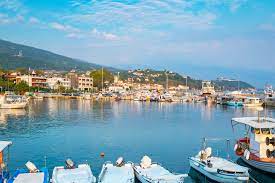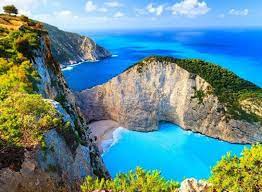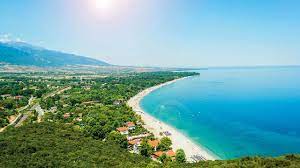
The Olympic Riviera (Olympic Riviera) is a picturesque region located on the eastern coast of mainland Greece, near Mount Olympus and the Aegean Sea. It is known mainly for its beautiful beaches, landscapes, rich history and associated Olympic sites. Here is some information about the Olympic Riviera:
The Olympic Riviera is a popular vacation destination that combines beautiful beaches, historical significance and breathtaking views of Mount Olympus. It is an ideal place for people looking for relaxation, active outdoor recreation and for history and nature lovers.

Here is some information about the Olympic Riviera:
Beaches: The Olympic Riviera offers beautiful sandy beaches that are popular with tourists. Some of the most famous are Paralia, Olympic Beach, Leptokarya and Platamonas. You can enjoy the sun, swim in the sea and enjoy various water attractions.
Mount Olympus: The Olympic Riviera is surrounded by the majestic Mount Olympus, which is considered the birthplace of the ancient Olympic Games. It is the highest peak in mainland Greece and has great importance in both Greek mythology and history.
Olympus National Park: Mount Olympus is part of Olympus National Park, which has been designated a biosphere reserve by UNESCO. The park offers picturesque hiking trails that lead through mountain gorges, forests and green glades.
Dion: Near the Olympic Riviera is the ancient city of Dion, which was an important religious and cultural center in ancient times. There you can see the ruins of temples, a theater, baths and other ancient buildings.
Archaeological discoveries: Numerous archaeological excavations were carried out in the Riviera Olympic region, which contributed to the discovery of many valuable monuments. You can see them in museums in nearby towns.
Tourist Destinations: There are many charming tourist destinations on the Olympic Riviera, such as Katerini, Litochoro, Paralia Katerinis and Nei Pori. They are full of hotels, taverns, shops and attractions for tourists.

Author: Mateusz Zdanowski
Sprawdź również wersję polska artykułu–>